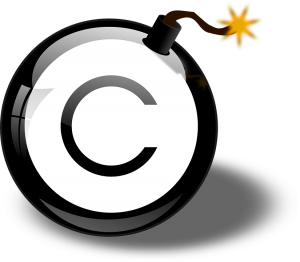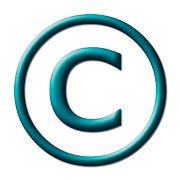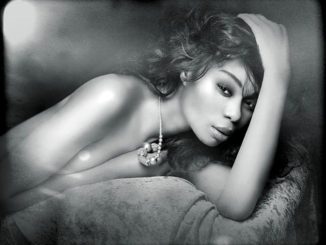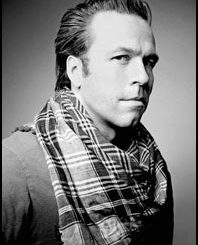In this digital age, photography copyright laws become even more important to understand. Yet will it be around for much longer when the global nature of the Internet makes it impossible to enforce?
The popularity of the Internet, along with advances in digital imaging and desktop publishing, has raised many issues among writers, artists and photographers.
Appropriation of intellectual property by pirates can now be done with ease and anonymity.
A wealth of information and images abound on the Internet that can be copied with a keystroke onto a hard drive. From there the use of purloined property is limited only by the imagination.
Image manipulation software makes it easy to modify an image obtained from another’s website.
Desktop publishing software makes it possible to take the product of another’s research and use it in a newsletter, magazine article or website in a matter of seconds.
Much of this “borrowing” may be a matter of ignorance about copyright law. However, other cases are deliberate, for as the amount of information available on the Internet and in print increases, the chances of getting caught shrink. It becomes impossible for anyone to effectively police all of the publications and websites around the world.
Nonetheless, knowledge of the photographers copyright laws can protect you and your work to some extent. It can also help keep you out of legal trouble by updating you about the rights artists and writers have over the use of their materials–if and when you are tempted to use something you did not create.
In the discussion that follows please remember this article is not legal advice, but merely attempts to share the authors’ research. No legal advice is intended or inferred. In this area of law (which has more interpretations than the Bible) consult a lawyer versed in photography copyright laws if you have specific questions.
There are even copyright lawyers who specialize in Internet issues. If you cannot afford one, consider joining one of the many guilds and unions for writers, artists and photographers. Many of these provide access to legal services at reduced rates as part of their membership services.
Also, look for one of the Volunteer Lawyers for the Arts organizations in your area. Participating lawyers in these organizations provide legal advice for very reasonable cost.
Here is a basic overview of copyright law, especially as it pertains to artists and photographers. We can’t go into all of the issues in this article, but later we will tell you how to go about getting more information.
Under the provisions of the revised photography copyright laws, a photographer owns all rights to his pictures at the moment of creation. That means he and he alone owns the right to sell, use, distribute, copy, publish, alter or destroy his work of art.
If you are a photographer, this ownership begins the moment you click the shutter. It continues throughout the life of the artist and 50 years after his or her death. In order to insure you have all the rights the law provides, as well as access to all the legal remedies available, you should have a copyright notice put on all of your published works.
“Publication” means not only published in the sense of inclusion in a printed book or magazine, but also distribution via public sale, display with intent to sell (as in a gallery), and the rental, lease or loan of the work. And now, with the Internet, publication includes use on a page.
An exception to the ownership just described occurs if the work was done as work for hire. This is the case when a photographer or other artist signs a contract to produce a work or works for a fee. In this contract “work for hire” is specifically noted.
The artist or photographer relinquishes all rights to his or her work. Those rights are assigned to the client. In other words, your client–not you–owns the copyrights . This transfer of rights has been the source of much controversy and many legal battles.
Be very careful when reading your contracts to be sure you are not giving up your rights to your work. Copyrights for work for hire continue for 100 years past the date of publication.
It should be noted that just because you own the rights to your work, this does not mean you have the rights to use your work. Issues such as model releases, invasion of privacy, intended use, etc. all play a part in whether you may safely publish or sell your work.
Someone can stop you from using your photograph of them, for example, if they feel you have invaded their privacy or shown them in a bad light.
Photography Copyright Laws – Notice
The copyright notice should take the form of:
©2015 Your Name. All rights reserved. or,
©Your Name 2015. All rights reserved.
This notice serves the purpose of declaring the work is copyrighted and is not in the public domain. The copyright should be affixed to each and every picture. You should also include the phrase “All Rights Reserved” after the notice. This may offer you some protection in the international arena.
But what about when the picture is published in a magazine? Often the photograph is printed without the copyright notice. Have you lost your copyright? No. As long as the magazine is copyrighted, you are protected, although you may want to secure a letter from the publication stating you retain copyrights.
It is also permissible for the publications to list your copyright at the end of an article in which the photograph appears. You will find such copyright notations in Apogee Photo Magazine. In our articles and gallery, we locate the photographer’s copyright at the end of the page in which it appears. The photographer retains all rights.
The next step is to register your copyright with the Copyright Office. This must be done in order to take legal action and seek damages and compensation. This does not mean that should you discover someone is using an image without your permission, you cannot go to court and make them stop.
Most legal experts agree that you can register the copyright even after you have discovered the misuse of your work and take the case to court, but you will not be entitled to damages or compensation.
If you have discovered unauthorized use of your work and have yet to register it, please contact a lawyer to find out what remedies you might have in your particular case and what you need to do. Sometimes a simple letter may be all you need.
If you are a visual artist, you will need the form VA. The copyright office has a website where you can download forms, obtain more information, correspond directly with the Copyright Office and link to other sites related to copyright issues.
What if you take hundreds of photos a year? Do you have to register each and every one individually? Thankfully, no. Many photographers will register their images on contact sheets, microfilm, strips of movie film, even videos. The catch is that the group of pictures must be thematically related and be titled, as in “Paris,” “the Grand Canyon.” However, the title “Photographs by your name, taken in 1997” is also acceptable.
There are currently plans to simplify the registration process, by allowing photographers to register their images with just a written description and dates of the images, in lieu of copies of actual images.
The implementation of this plan has been halted temporarily by pressure from opponents of the plan. Critics include photofinishers who fear a flurry of infringement claims, even for innocent infringements. We will have to wait until next year to learn what decision is made.
Fair Use, Derivative Use and Public Domain:
These three phrases generate constant questions to legal experts. In the Copyright law, provision was made for specific uses of copyrighted work where permission to use is not required, and the copyright holder cannot sue for unauthorized use.
This is called “fair use.” Specifically, these uses are: teaching, criticism, review, news, parody and satire. Many people have interpreted fair use to mean “as long as you don’t sell it, you can copy it.”
This is not true. Even among teachers there is a tendency to play fast and loose with the concept of fair use, copying anything they think may help in teaching their courses, yet there may be conditions even in these cases, such as whether or not the organization for which the teacher works is non-profit or non-commercial.
The copyright law says the creator of a derivative work can apply for copyright protection. A derivative work is one which is based on one or more pre-existing works. For example, suppose someone created a painting from your photograph.
Or perhaps you recreated a Maxfield Parish illustration via your camera and computer. These are examples of derivatives. However, a derivative is only copyrightable if it was created with the permission of the original copyright holder(s).
Without permission, the reproduction may be a copyright infringement. But just how far can you “borrow” before you’ve crossed that legal border? Suppose you used only a part of someone else’s work or merely the “idea?” The common technique for determining the acceptability of this is called “the man on the street test.”
If you place the new work next to the old one, would the average, reasonable person without art background say the two pictures are mostly the same? If so, the newer work may be an infringement.
Does this mean I can’t look at other photographers for inspiration? No, but you must be careful you make the distinction between drawing inspiration from an artist or actually imitating the artist’s particular artistic expression.
After fifty years following an artist death, the work goes into the public domain. Does that mean you can copy or borrow freely from these works? Generally the answer is yes. But there are conditions. If you are using a photograph of a work, you may not be able to incorporate this photograph into your work, because the photograph may be copyrighted.
This is the case with many museums who limit the photographing of their collected works to staff photographers. All published photographs of the work may be copyrighted by the museum, and therefore not useable. In this case, you may only use the work if you took the photo yourself or had written permission from the museum.
You may have seen the many CD-ROM packages which offer royalty-free images. These have further complicated the situation. In the case of images of public domain works, you need to be sure the CD makers truly do have the right to offer these images.
If they do, then they probably hold the copyright for the scanned images on the CD. Make sure they are allowing you to use them freely. If they’re offering images of present day artists, make sure they have the rights to those images as well. If not, and you use a questionable image, both you and the CD manufacturer could be liable.
The legal experts suggest you read the rights granted to you carefully. If you plan to use these images for commercial use, make sure you call the company and document your rights in writing.
What is the future? There are many pessimists out there. There are many who hold there is no intrinsic value to intellectual property, and the control over the use of one’s ideas constitutes control over other people’s lives.
These people actively work for the abolition of copyrights in general. As a practical matter, one wonders how copyright law can be enforceable in the age of e-mail, the Internet and faxes.
There is simply no way to police the situation, especially in view of the fact that the Internet itself is a global phenomenon and not always governed by US laws. Granted, there are International copyright agreements, but what are you really going to do if someone from Slovenia decides to copy your work?
Presently, the Commerce Department has taken on the task of shoring up the problems with the present copyright law in the US.
Recommendations include making it a crime to alter copyright information or to remove it altogether, which can be done all too easily with digitized images. There will also be recognition of the fact that electronic transmission of a work can constitute both publication and copying, and that the rights of distribution, even by such transmission, rest solely with the copyright holder.
We can only wait to see how this difficulty will shake out, and what–if anything–can be done to prevent the whole issue of copyrights becoming a relic of the past.
We have attempted to briefly outline some of the issues concerning copyright. For more information check out the United States Copyright Office, as discussed in this article, where you can download forms and instructions and correspond with copyright officials.
photography copyright laws Article by Michael Fulks





Leave a Reply